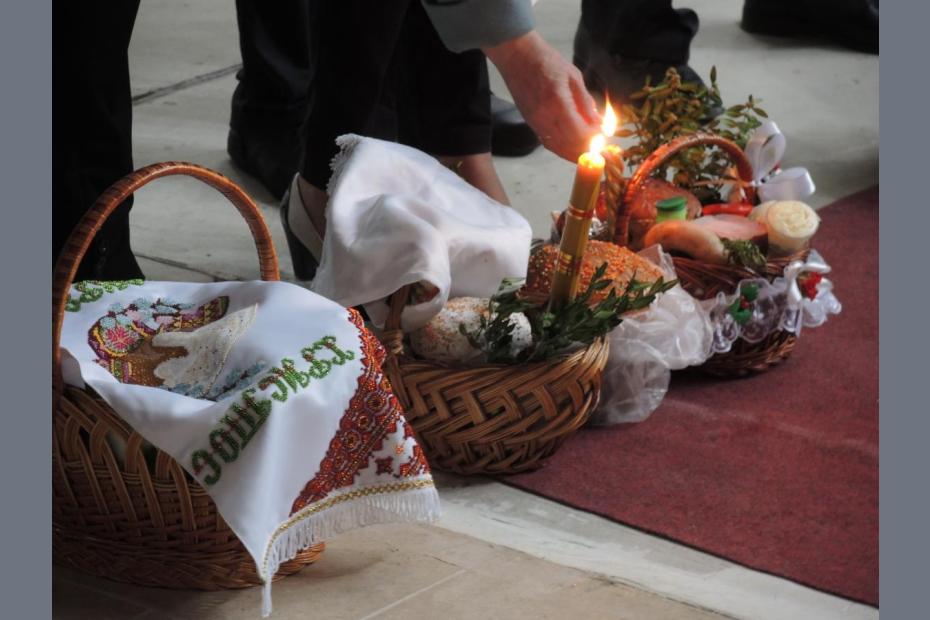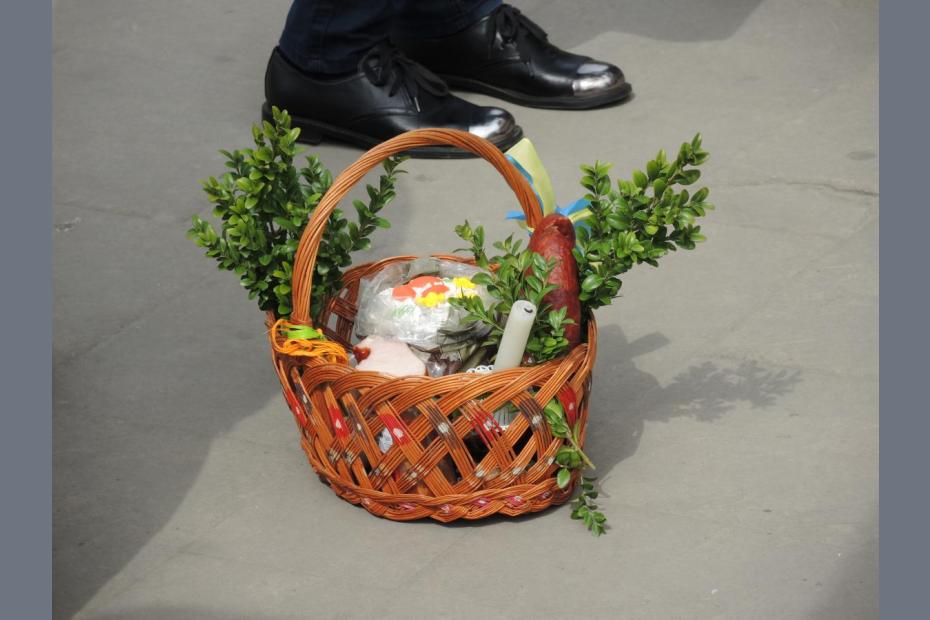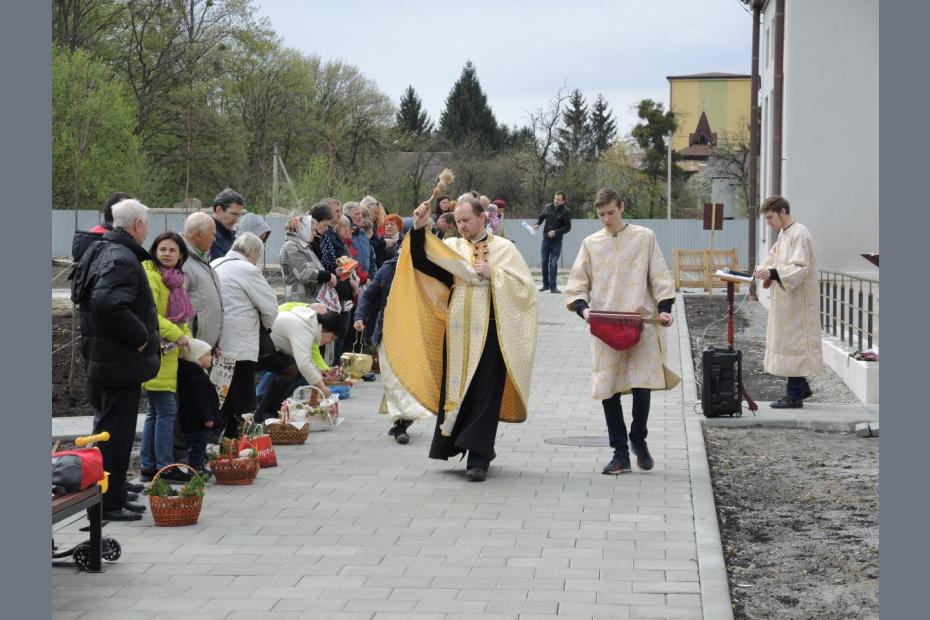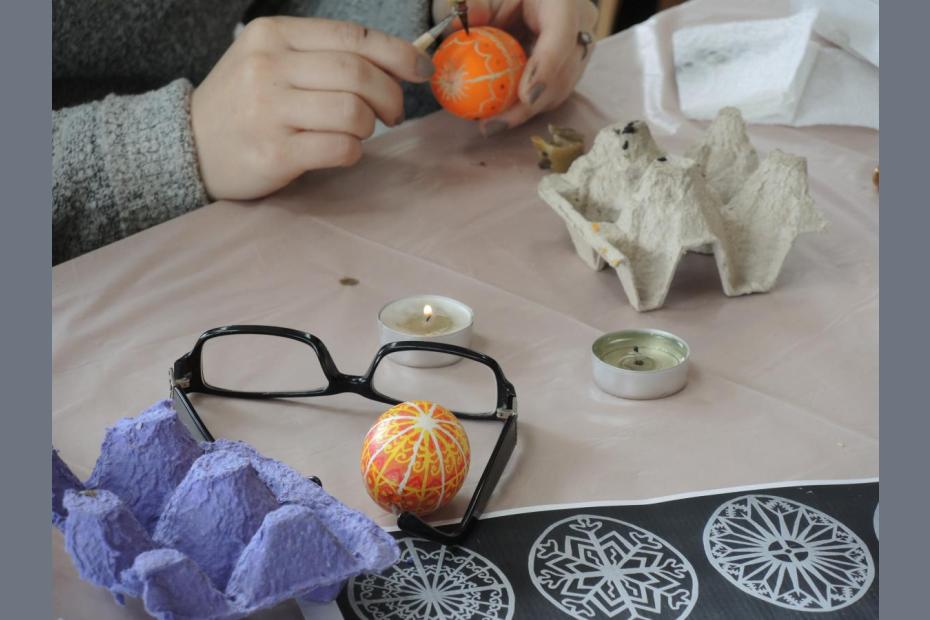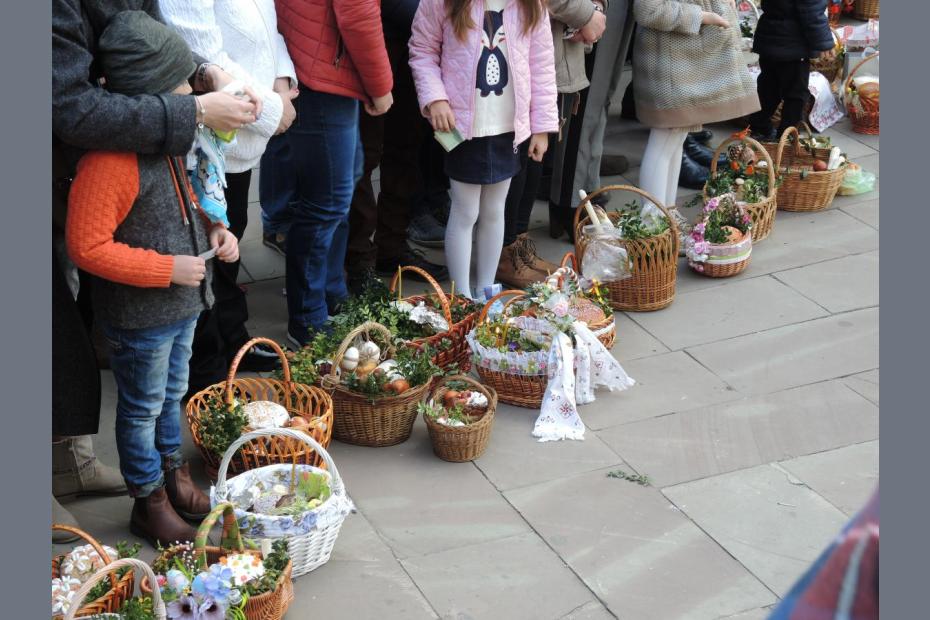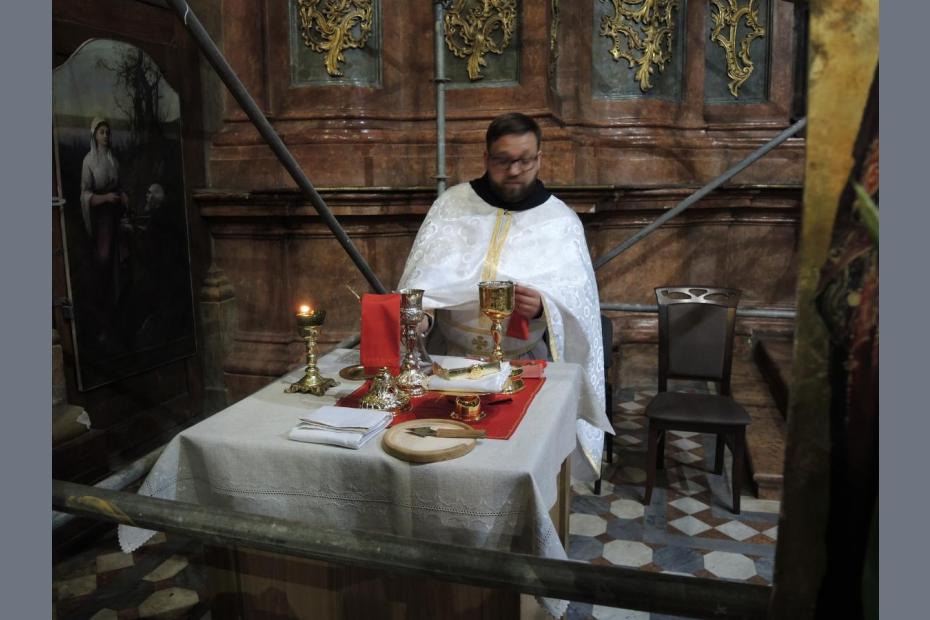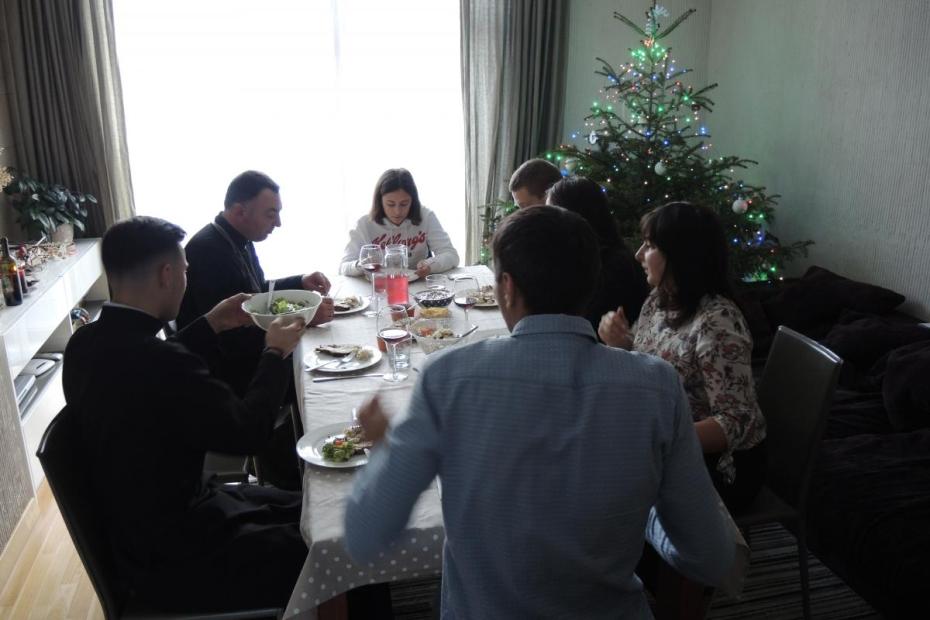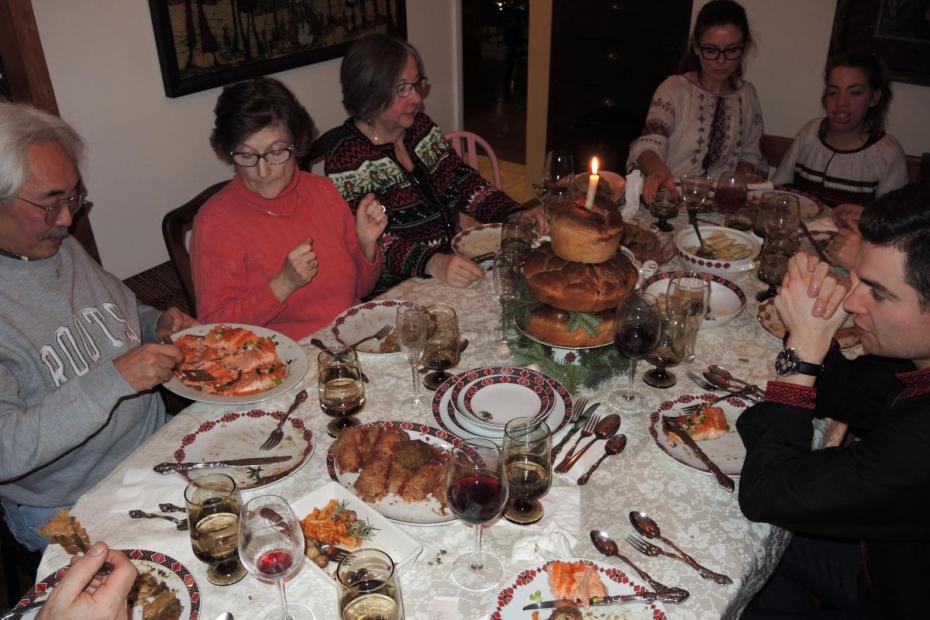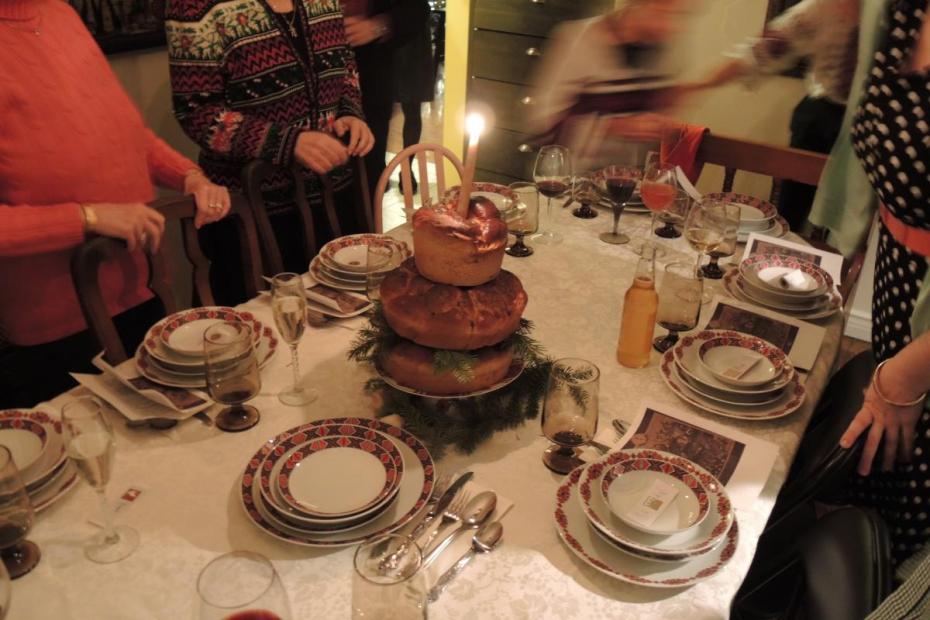Food and fasting play a relatively significant role in the spirituality and religious culture of the Ukrainian Greek Catholic Church. Believers are encouraged to abstain from meals on many occasions throughout the year. As a matter of custom, at Christmas feasts and Easter Pasky the choice of particular foods plays a big role in how people mark the days.
Fasting and abstinence
Ukrainian Greek Catholic tradition includes both fasting (going without food at certain times) and abstinence (not eating particular foods at certain times). The tradition applies to healthy children over age 4 and adults under age 60. On many Wednesdays and Fridays year-round, the tradition encourages abstaining from alcohol, dairy, eggs, fish, meat and olive oil. The Church asks for 40 days of fasting for Great Lent, i.e. before Easter, but abstinence begins the week before that, during a week known as Cheesefare week, when meat should not be consumed. Great Lent traditionally includes weekday fasting until noon, and meat and dairy abstinence thereafter. The 40-day period before the Nativity (Christmas), comparable to Advent in the western Church, is also a time of recommended fasting, known as Philip's Fast—it begins at the feast of St. Philip—or the Nativity Fast. There is also a traditional 14-day Dormition fast before the feast of the Dormition (August 15) and an “Apostles’ fast” leading up to the feast of Saints Peter and Paul (June 29).
Application of the fasting tradition varies from eparchy (diocese) to eparchy. In the United States today, a simpler fast is often encouraged, from meat and meat products, but the fasts are still listed on the Church’s liturgical calendar. Interviewees in Ukraine and Canada report that the tradition of fasting, rigorous as it is, is often not fully observed by lay people, but clergy still encourage some adherence and regard it as a mark of Byzantine Christian identity. 1
In surveys of religious believers conducted by anthropologist Vlad Naumescu in 2003-04 in the suburb of Sykhiv, near Lviv, western Ukraine, about 15% of his respondents claimed to fast at least monthly, 48% “occasionally,” 21.8% “annually/seldom” and 13.5% never. A similar survey by Naumescu in the village of Shchirets in western Ukraine revealed lower levels of adherence there.2 In a 2015 Pew survey, 54% of Catholics in Ukraine said that they fast “during holy times such as Lent.”3
Meals to celebrate
Fortunately for Ukrainian Greek Catholics, food also plays a role in celebration. Whereas in many countries it is only important that one have some feast on Christmas and Easter, in Ukraine, and to some degree for Ukrainian Catholics in diaspora, the particular foods of the feast are culturally significant.
At Christmas (the feast of the Nativity in the Ukrainian Greek Catholic tradition), following a fast leading up to the Eve of the Nativity of Christ (Christmas Eve), the fast is traditionally broken at the appearance of the first star in the sky, with an elaborate 12-course Holy Supper that can take a week to prepare. A longer entry describes one such family dinner in Ontario, Canada, including kutya, boiled wheat berries mixed with poppy seeds and honey; uzvar, stewed fruits; borsch, the Ukrainian beet soup; vushka, mushroom-filled dumplings; other varieties of dumplings; boiled cabbage; stuffed cabbage; and pickled herring, or similar fish.
Another of the Great Feasts, Theophany (Vodokhreshcha in Ukraine), though more commonly called Jordan, is also celebrated with a 12-course family meal. Like Epiphany in the West, Theophany celebrates the revelation of the Trinity on the 12th day of Christmas. But rather than the arrival of the magi, it focuses on the baptism of Jesus by John in the River Jordan. On the eve of the feast, a special meal breaks a day-long fast, but still, despite is celebratory nature, follows the rules of abstinence by excluding meat and other items. It is known as Holodna Kutya, Hungry Kutya, and features kutya, borsch, dumplings, stewed cabbage and desserts. On a feast that celebrates baptism, holy water plays a special role. Families toast with and drink the holy water, which is said to have healing powers. The meal on the day of Jordan does include meat.
One aspect of Ukraine’s Pascha (Easter) tradition, the elaborately patterned and colored Easter eggs known as pysanky, are perhaps familiar to many readers around the world. But the food tradition is bigger than that. One highlight of Holy Saturday is the Sviachenia, the blessing of Easter baskets. From the late afternoon to even past dark, the streets in Lviv are full of people carrying a wicker basket of Pascha (Easter) foods to local churches to be blessed. The baskets, covered in a rushnyk, a special woven cloth usually proclaiming “Christ is risen,” are lined up in a rectangle near the church steps, and occasionally inside the church. The baskets typically contain a round loaf of a sweet egg bread known as paska, which is prepared exclusively for Easter; sprigs of green branches; some combination of ham, sausage and/or lamb; pysanky, the famous colored Easter eggs of Ukraine; cheese; and a beet and horseradish relish.
Outside the church, and sometimes inside, basket bearers and family members line up behind the baskets. All are very carefully displayed. A candle is stuck into the paska and lit for the blessing, and when a sufficient number appear, the priest offers prayers over the food, and sprinkles abundant holy water on the baskets and believers. Afterwards, families, many dressed up for the occasion, often take turns posing for photographs with their baskets. The number of people who bring a rushnyk is said to far exceed those who attend services. In Lviv, in 2017, the blessing of Easter pasky drew far more people than were to be seen at liturgies. The practice is common to Orthodox and Ukrainian Catholic churches.
The items in the basket are eaten ritually on Easter morning, and the rest of the day is a time of eating and celebration.
Fasting and Eucharist
As was true in the Latin church before Vatican II, the Ukrainian Greek Catholic tradition espouses fasting from midnight the night before in order to receive Communion. Interestingly, too, the bread used for the Eucharist is leavened, in contrast to the Latin rite, which insists on unleavened bread. The bread, called prosphora, is baked from wheat flour, yeast, salt, and water, baked in tall round loaves. Women of the parish usually bake the bread as an offering, and bring it to the church with a prayer request. Prosphora that is not used in the Eucharist is, on some feasts, blessed and cut into cubes for the faithful to take after the liturgy.
- 1A fuller description of the fast and abstinence rules can be found at http://www.stsophiaukrainian.cc/resources/thefastingseasons/.
- 2Vlad Naumescu, Modes of Religiosity in Eastern Christianity: Religious Processes and Social Change in Ukraine (Berlin: Lit, 2007): 247-250.
- 3Pew Research Center, “Religious Belief and National Belonging in Central and Eastern Europe,” (May 10, 2017), 73, http://assets.pewresearch.org/wp-content/uploads/sites/11/2017/05/15120244/CEUP-FULL-REPORT.pdf. 29% of Orthodox respondents in Ukraine claimed to fast in the same periods.
